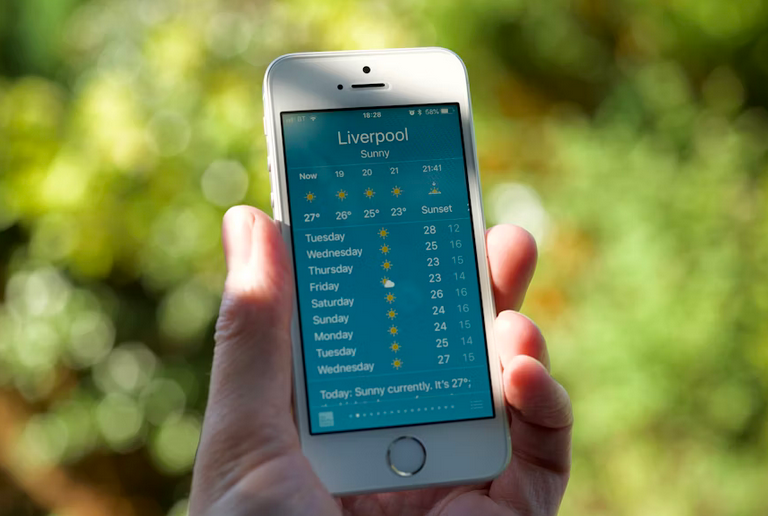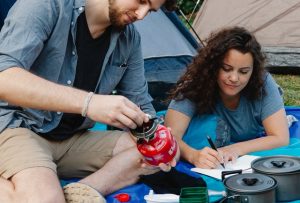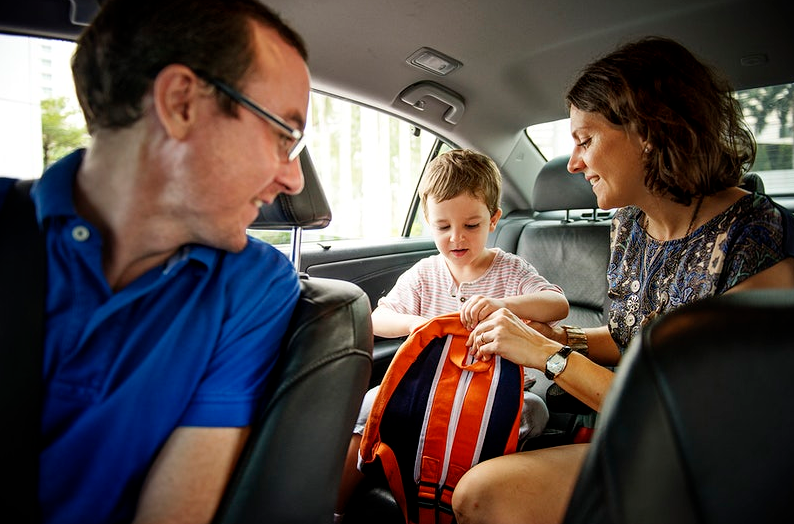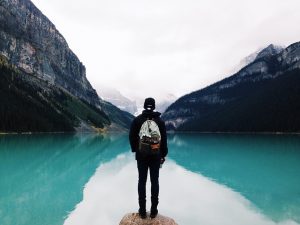Every traveler knows that the weather can make or break a trip. It influences not only what we pack, but also where we go, what we do, and even how we feel. A blue-sky beach day can create lasting memories, while a week of monsoon rain might send us scrambling to rearrange our plans. Whether you’re chasing summer sun or timing your trip around cherry blossoms, weather has a way of shaping our journeys more than we often realize.
The Best Outfits for the Destination
One of the first things travelers think about after booking a trip is what to wear. And that’s where weather becomes a powerful factor in shaping your suitcase. Take tropical destinations like Southeast Asia, for example. The humidity and sudden downpours make breathable fabrics and quick-drying clothes a must. For instance, clothing tips for travelers visiting Singapore often focus on lightweight outfits that can handle both intense sun and sudden rain—think linen shirts, cotton dresses, and packable ponchos. If you plan on moving from outdoor heat into air-conditioned malls or museums, layering becomes your secret weapon for staying comfortable and stylish.
Weather Apps as Your Best Friend

Gone are the days of guessing what to wear based on the hotel TV forecast. Today, travelers rely on weather apps to plan their outfits, day trips, and even travel routes. Real-time updates and 10-day forecasts help you pack smarter and adapt on the fly. Apps like AccuWeather, Weather Underground, or local services can alert you to incoming storms or temperature dips before you’re caught off guard. Keeping an eye on the forecast isn’t just practical—it’s empowering.
Travel Plans Along With the Forecast
Even the most detailed itinerary can be undone by a shift in the weather. A downpour might cancel that scenic hike, or unexpected fog could wipe out a city view you traveled hours to see. Experienced travelers often leave wiggle room in their plans for this very reason. They stay flexible, swapping an outdoor adventure for a museum visit or a cozy café day when clouds roll in. Being prepared mentally—and with a few backup options—can keep the mood light when the weather doesn’t cooperate.
Shoulder Seasons: The Sweet Spot
Traveling during the shoulder season, the period between peak and off-peak times, often means better prices and fewer crowds. But the tradeoff? Unpredictable weather. You might catch a gorgeous sunny day—or encounter a cold snap you didn’t plan for. Still, many find the benefits outweigh the risks. Visiting a destination like Japan in late spring or Greece in early fall can offer perfect conditions with half the hassle, as long as you’re ready for some variability.
How Climate Shapes Culture

Weather doesn’t just influence what we wear or when we travel—it also plays a role in how people live. Tropical destinations tend to have early-morning and late-night activity schedules to avoid midday heat. In colder climates, cozy traditions like hot drinks and indoor gatherings are the norm. Understanding how the local culture adapts to weather can help you engage more meaningfully with your destination. You might join locals for an early sunrise hike in Bali or a mid-afternoon siesta in Spain, all shaped by climate patterns over generations.
Packing Light But Packing Right
Weather-driven packing isn’t just about checking the forecast—it’s about predicting how your days will actually feel. It’s easy to overpack for every possible scenario, but smarter travelers learn to choose a few versatile items that work in different settings. A lightweight jacket, water-resistant shoes, or a multi-use scarf can be lifesavers. Think less about how to pack everything and more about how to adapt with less. Weather-friendly wardrobes are as much about flexibility as they are about comfort.
Weather may be unpredictable, but it doesn’t have to catch you off guard. When we travel with the climate in mind—whether it’s packing breathable layers, staying open to last-minute plan changes, or tuning into local customs—we get more than just a smoother trip. We gain a deeper connection to the places we visit. So, the next time you plan a getaway, don’t just check the forecast—use it to shape your experience. After all, some of the best memories are made chasing clouds.…









 Sometimes you have to be adventurous when picking the perfect restaurant during your travels. While sticking with familiar cuisine and restaurants may seem safe, stepping out of your comfort zone can lead to amazing culinary adventures.
Sometimes you have to be adventurous when picking the perfect restaurant during your travels. While sticking with familiar cuisine and restaurants may seem safe, stepping out of your comfort zone can lead to amazing culinary adventures.
 The second step is to be interested in the person you speak to. Ask them questions about their life and culture. Show genuine interest, and they will warm up to you quickly. Not only will this help you make friends, but it can also be a great way to learn more about the local culture.
The second step is to be interested in the person you speak to. Ask them questions about their life and culture. Show genuine interest, and they will warm up to you quickly. Not only will this help you make friends, but it can also be a great way to learn more about the local culture.
 If you’re new to fishing or want to make sure you’re targeting the right fish, consider hiring a fishing guide. Guides know where to find fish and how to catch them, so they can help you maximize your chances of success on your trip.
If you’re new to fishing or want to make sure you’re targeting the right fish, consider hiring a fishing guide. Guides know where to find fish and how to catch them, so they can help you maximize your chances of success on your trip. Before you go fishing, be sure to check with your state’s fish and wildlife department to see if they require a fishing license. In some states, you can purchase a one- or two-day pass for the state where you’re planning your trip that will allow you to fish without having to buy an annual license.
Before you go fishing, be sure to check with your state’s fish and wildlife department to see if they require a fishing license. In some states, you can purchase a one- or two-day pass for the state where you’re planning your trip that will allow you to fish without having to buy an annual license. Once you’ve decided on a place to go fishing and what type of fish you’re targeting, it’s time to start thinking about what gear you’ll need. If you’re going after big fish like bass or trout, you’ll probably want to use heavier tackle than if you’re catching panfish. And don’t forget the sunscreen! Even on overcast days, fishing can be a very sun-intensive activity.
Once you’ve decided on a place to go fishing and what type of fish you’re targeting, it’s time to start thinking about what gear you’ll need. If you’re going after big fish like bass or trout, you’ll probably want to use heavier tackle than if you’re catching panfish. And don’t forget the sunscreen! Even on overcast days, fishing can be a very sun-intensive activity.

 Now you are ready to make a camping list. This checklist will help you ensure that nothing is forgotten on your camping trip. It’s easy to create a camping checklist. I’ll show you how! You will find a sample checklist to help you get started on your inventory at the last minute.
Now you are ready to make a camping list. This checklist will help you ensure that nothing is forgotten on your camping trip. It’s easy to create a camping checklist. I’ll show you how! You will find a sample checklist to help you get started on your inventory at the last minute.

 It is much easier to plan your trip by researching the lodging options before you go. While I reserve nights at a handful of places that I know I will not be able to make it, I also keep a list of possible options.
It is much easier to plan your trip by researching the lodging options before you go. While I reserve nights at a handful of places that I know I will not be able to make it, I also keep a list of possible options.


 There are schools around the world that will provide you with credits that can be counted towards your degree. You can decide to complete your entire level at a world university! Before you study abroad, there are many things to consider: will my student loans mainly cover study and travel expenses? Check with your home university to see if they offer study abroad programs that are related to your studies. If you cannot find loans, you still have the option to do research abroad. Especially if you want to get language loans, it may be much cheaper, long-term, to visit South America or Asia while traveling.
There are schools around the world that will provide you with credits that can be counted towards your degree. You can decide to complete your entire level at a world university! Before you study abroad, there are many things to consider: will my student loans mainly cover study and travel expenses? Check with your home university to see if they offer study abroad programs that are related to your studies. If you cannot find loans, you still have the option to do research abroad. Especially if you want to get language loans, it may be much cheaper, long-term, to visit South America or Asia while traveling. There is a whole range of opportunities to advertise worldwide, whatever their importance. If you are looking for areas where you want to advertise, try to avoid paying large sums of cash. It will probably cost you something (the trip to the location, maybe some food while you are there), but don’t let it cost you to find the job done.
There is a whole range of opportunities to advertise worldwide, whatever their importance. If you are looking for areas where you want to advertise, try to avoid paying large sums of cash. It will probably cost you something (the trip to the location, maybe some food while you are there), but don’t let it cost you to find the job done.






 We traveled to have a buzz of life in the city, as I said. If you go back to work, save the notes and excitement to recharge, which can help us rejuvenate. The trip keeps pleasure and helps people distract themselves from severe conditions, which leads to lower stress levels so that you feel satisfied and calm. You will find exceptional resorts if you plan to explore the mountain resorts where it is accessible and will feel more relaxed.
We traveled to have a buzz of life in the city, as I said. If you go back to work, save the notes and excitement to recharge, which can help us rejuvenate. The trip keeps pleasure and helps people distract themselves from severe conditions, which leads to lower stress levels so that you feel satisfied and calm. You will find exceptional resorts if you plan to explore the mountain resorts where it is accessible and will feel more relaxed.